-
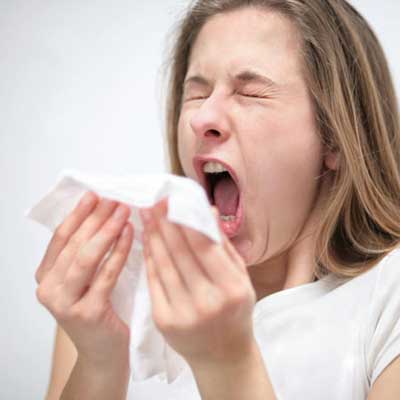
Maintain a Healthy Bath
Mold, bacteria, viruses, and other irritants lurking in bathrooms could be preventing you from staying healthy and happy. See these 10 ways to get rid of the yuck and keep the bath clean. -
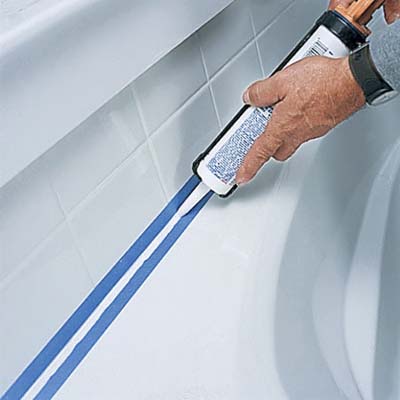
Icky Caulk and Cracked Tiles
Puckered, missing, or shrunken caulk can allow water to seep into a wall cavity, leading to mold or even wall failure. Likewise, a chunk of missing grout in a tub surround can cause serious water damage behind the tiles. Not only will this damage cost you big bucks to fix, but it will harm your health when you breathe the air in the affected room. Molds reproduce by releasing spores that can provoke allergic reactions ranging from the mild (itchy eyes, runny nose, head congestion, coughing) to the more severe (skin rashes and worsened asthma).
Replace failing caulk and cracked tiles to discourage mold from growing behind the walls. Get step-by-step advice on fixing both here. -
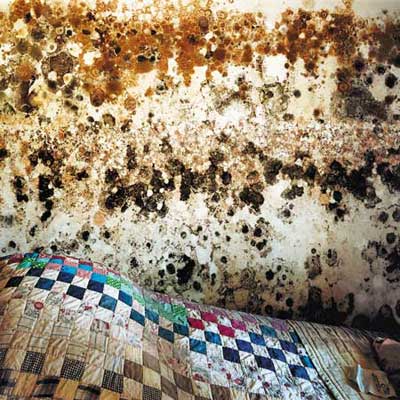
Too Much Moisture
Don't let moisture build up and cause mildew, which leads to mold! There are more than 100,000 species of mold on the planet, and one of their favorite places to live is your bathroom. Make sure to dry off surfaces that collect standing water, and also keep the room well ventilated. Run your ceiling vent fan after every shower. Install a switch timer to make sure it runs at least 20 minutes to vent moist, mildew-attracting air outside.
Also see How to Install a Bathroom Vent Fan and How to Properly Vent a Bathroom. -
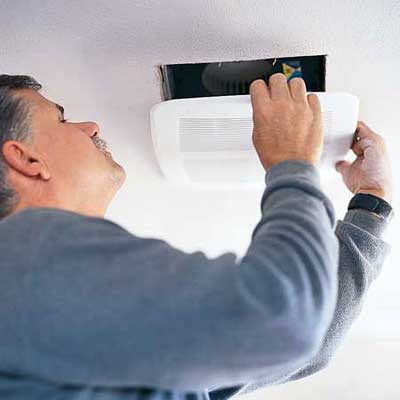
The Wrong Fan
Make sure your bathroom fan isn't just re-circulating indoor air or venting into the attic. Replace it with a true exhaust fan, which direct particles and humidity out of the house entirely. "If you're venting damp spaces to your attic, mold can start growing there and eventually spread to the rest of your house," says Laurie Ross, editor of Allergy and Asthma Today.
Could there be mildew lurking in the closet? Find out how to deal! -

Harsh Cleaners
Avoid using cleansers with ammonia and chlorine (and never, ever mix them). These irritate skin and lungs, and even provoke asthma.
See 5 of the Best Nontoxic Cleaners You Aren't Using and Safer Cleaners That Help Detox Your House. -
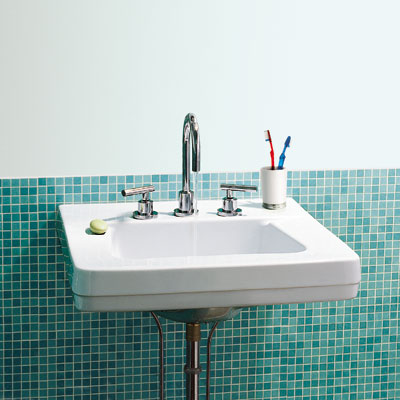
Faucet is Often Ignored
Sanitize faucets, where germs and flu viruses collect fast. Wipe them down with a 3 percent hydrogen peroxide solution or try wipes that use plant oils to kill germs and viruses, such as EPA-certified Seventh Generation Disinfecting Wipes ($5.75; seventhgeneration.com). -
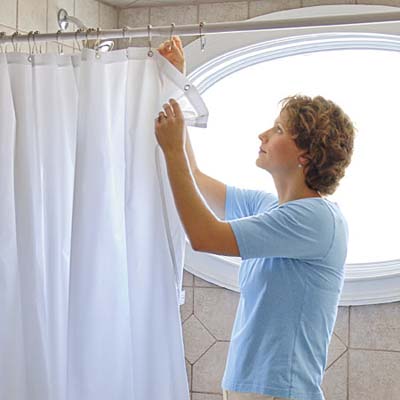
Toxic Shower Curtain
Swap out vinyl shower curtains for washable nylon or polyester ones. Vinyl can contain phthalates, which may be hazardous to reproductive health. Similar to shown here: Nylon Hotel Shower Curtain ($20; restorationhardware.com). -
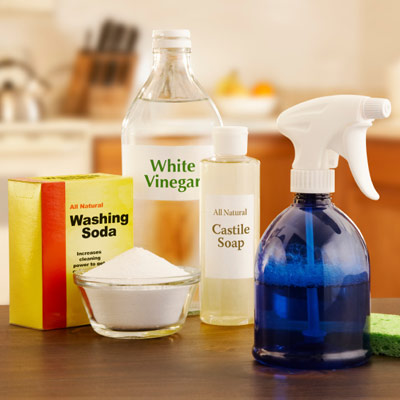
Too Many Chemicals
Avoid chemical grout cleaners, which can burn your skin. Make a paste of baking soda and hydrogen peroxide instead, and let it sit on grout for 30 minutes before scrubbing and rinsing.
Also see Surprise Spring Cleaners. -
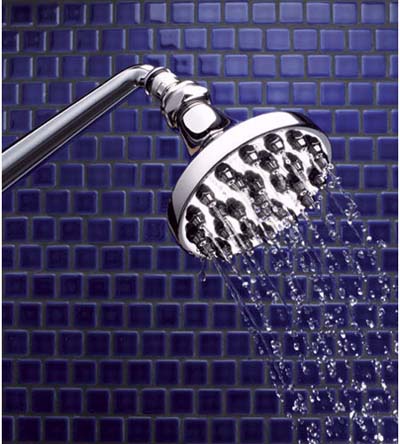
Chlorine in Water
Scary but true: chlorine is commonly found in our tap water. During a hot shower, you breathe in chlorine vapors released in the shower's steam. This inhalation puts you at a higher risk for fatigue, asthma, bronchitis, and both bladder and breast cancer. Install a whole-house water filter to reduce exposure to airborne chlorine while you're showering. Or try a filtered showerhead, such as Aquasana's Shower Filtration System ($85; aquasana.com).
Also see How to Install a Water Filter. -
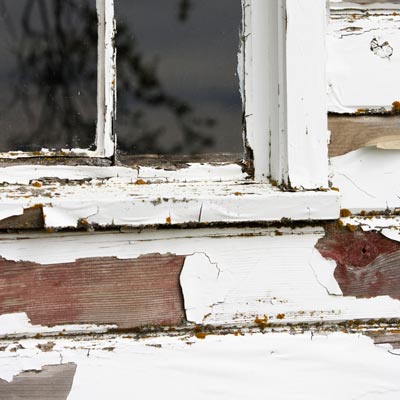
You Have Old Paint or Old Plumbing Fixtures
Often overshadowed by lead's well-deserved reputation for causing learning disabilities, seizures, and death is a fact we've known since Roman times: It impairs fertility. In the home, lead can be found in the old paint of houses built before 1978; the cartoon characters and other graphics on drinking glasses; vinyl products; certain folk remedies; metal trinkets; contaminated soil; and in the solder of old plumbing fixtures.
See 15 Ways Your Home Can Make You Infertile. -
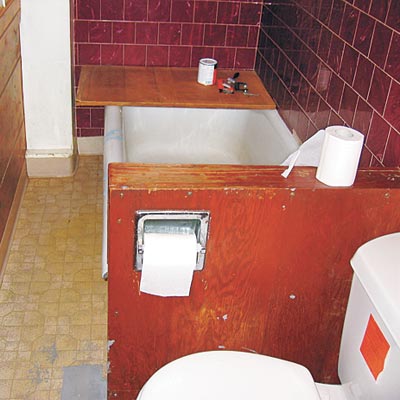
Asbestos?!
Most people don't expect their old vinyl floor to be loaded with asbestos. Along with lead and mold, asbestos is one of three big household health threats that can become even bigger when disturbed or exposed during a renovation. And while having any one of these can be bad for you, so can getting rid of it.
A mineral valued for its fire resistance and tensile strength, asbestos can cause scarring of the lungs (asbestosis) or cancer when its shardlike fibers are inhaled. Banned from building materials in 1972, it can still turn up in the aforementioned floor tiles, as well as in insulation, plaster, mastic, ceiling tiles, caulk, and dozens of other products. See how to deal with it and when to call in a pro to remove it!
Don't worry, in response to health concerns, some vinyl flooring is now certified to meet strict standards for indoor air quality. Read all about vinyl flooring.
Helping Out the People by finding interesting World News. Take a Seat and read on and enjoy.
Sunday, March 24, 2013
10 Ways Your Bathroom is Making You Sick The bathroom may be all about cleaning, yet it's one of the worst places in your home for hiding nasty chemicals, allergens, and other toxins
Subscribe to:
Post Comments (Atom)
No comments:
Post a Comment